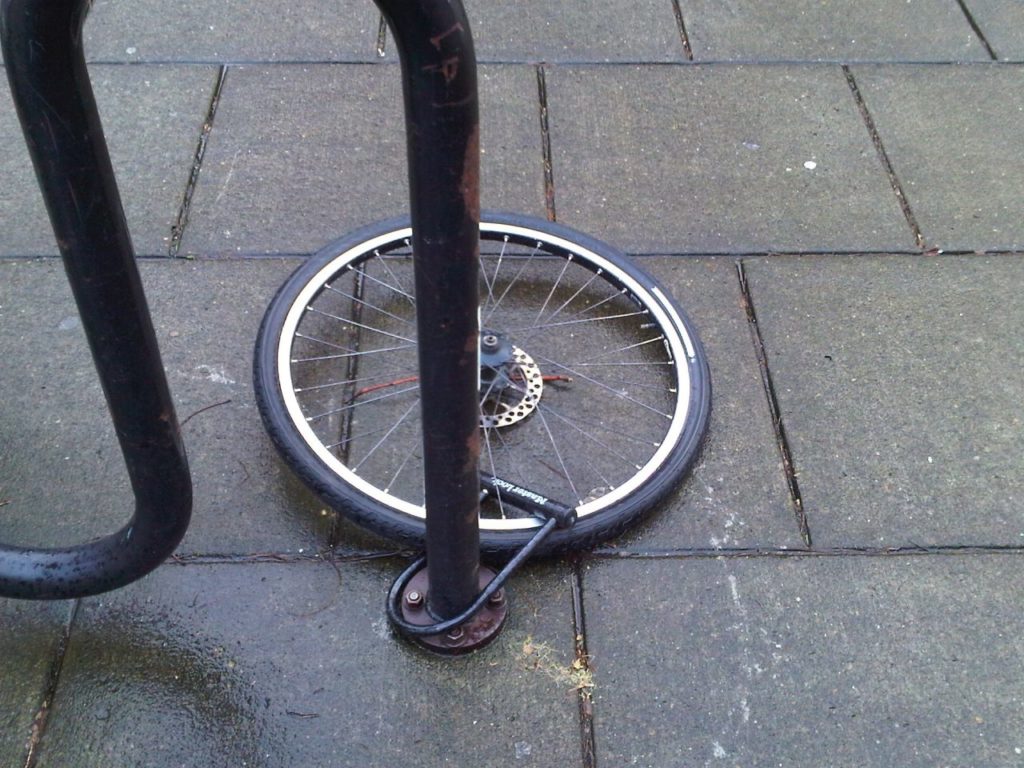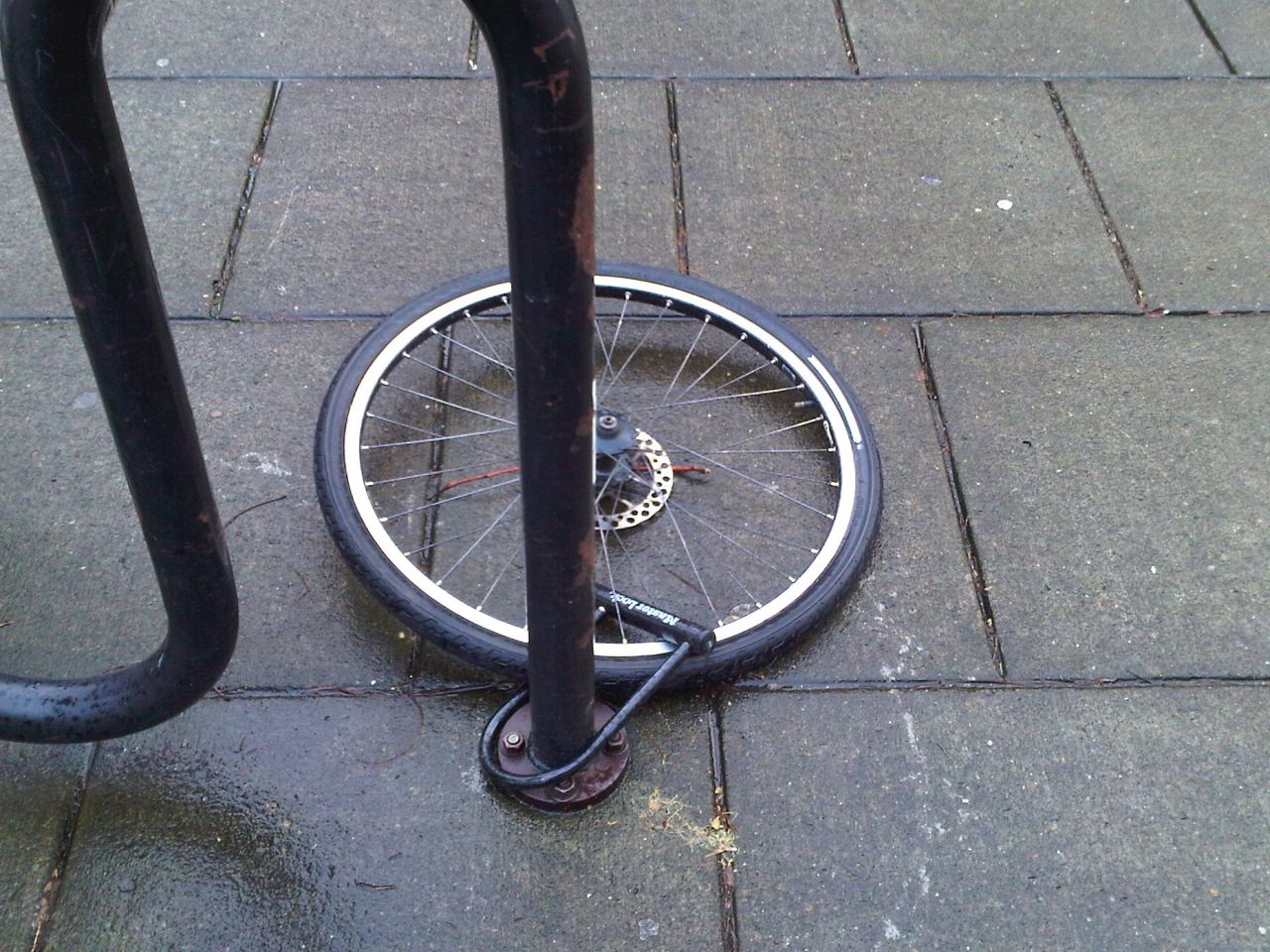
1. True or False: Bike theft is annoying to the victim, but overall is not a serious crime problem. That is why law enforcement agencies don’t devote many resources to fighting the problem.
2. Multiple Choice: Bike Theft is…
a. A crime of opportunity.
b. A way for “tweakers” to score some quick and easy drug money.
c. The work of organized criminal gangs.
d. All of the above.
3. True or False: All locks can be defeated, so it’s futile to try and lock your bike.
4. True or False: Bike theft is a relatively recent phenomenon, fueled by addiction to drugs and alcohol.
5. Multiple Choice: Bike thieves will take your bike…
a. Only when nobody is around.
b. After you have left it unattended.
c. Even if it is locked.
d. A and C.
e. B and C.
f. All of the above.
6. True or False: Protecting yourself from bike theft begins before your first ride.
7. True or False: All you can do to stop a bike thief is to buy a good lock and hope for the best.
8. True or False: If your bike is stolen and you find it later, you have the right to take it back.
9. True or False: If your bike is stolen, forget trying to contact the police. They are too busy with serious crimes to look for your bike.
10. True or False: In the “big picture,” bike theft is actually a good thing, for two reasons. First, economically-speaking, because it drives more bike sales when people replace their stolen bikes. And second, because it gets more people on bikes.
Answers:
1. False. Somewhere between 800,000 and 2 million bikes are stolen in the United States every year, amounting to an annual “haul” of $50 million—an amount greater than the annual haul from bank robberies. Nevertheless, bike theft is treated as a low-priority problem for the limited resources of law enforcement agencies.
2. All of the above. Most reports of bike theft involve somebody who left their bike unlocked and unattended for “just a minute” while they went into the store (See Ciao, Milano for one such account). Many of these thefts are “crimes of opportunity.” But bike theft is also a “humming illegal industry,” in which bikes are easily exchanged for cash, drugs, or even sex. This illegal industry includes drug addicts looking for an easy way to score drug money, “steal to order” street criminals, and both semi-professional and professional bike theft rings.
3. False. All locks can be defeated, but that doesn’t mean that bike thieves will devote all their energies to breaking your lock. Unless you left your mega-bucks racing bike locked out on the street overnight, bike thieves will try to pick the low-hanging fruit first. This means bikes that aren’t locked, or are locked with cheap cable locks that are easily cut, or are locked improperly. There are so many of these “easy pickings” around that a bike thief looking for a quick, easy score doesn’t need to waste time trying to break your proper lock, when he can get a bike that is just as good, but isn’t properly locked, right next to yours.
4. False. Bike theft is as old as the bicycle, with reports of professional bike theft rings operating in the Midwest as early as 1894.
5. B and C. Bike thieves have cut cheap cable locks while the owner is seated a few feet away. Bike thieves have cut better locks in broad daylight in sight of other people. Bike thieves have even accosted cyclists while riding in a deserted area (this is actually called “robbery”). But bike thieves will often prefer to take a bike that has been left unattended, particularly in an area where no prying eyes can see what they are up to. In fact, most reports of bike theft involve somebody who left their bike unlocked and unattended for “”just a minute.”
6. True. Before you take your new bike for your first ride, stop. First, document everything. If you are buying a used bike, get a written bill of sale describing the bike, including make, model, color, and serial number. If you are buying a new bike, this information should be on your bill of sale. Take photos of the bike, including photos of distinguishing characteristics. Create a file for all your records for this bike, and place all of your documentation (including service records) in this file. You will need this file if your bike is ever stolen. Second, insure your bike. If you want “full replacement value” for your bike, make sure that your insurance agent understands this and includes it in your policy. Otherwise, your policy will only cover “depreciated value.” Third, buy a good lock, and learn how to use it. NOW you can go for that ride. For more information about protecting yourself from bike theft, see About Bike Theft.
7. False. Buying a good lock is important, but it is useless unless you useproper locking technique. The rule of thumb you will want to follow is to lock your bike to a metal structure that is securely fastened in cement or otherwise fastened securely to the cement, and which cannot be easily cut or dismantled. If you are locking to a metal pole, make sure that it is securely fastened in cement, or that the bolts are not loose or easily removed. Also, be aware that thieves have been known to remove traffic signs from poles and then slide the bike up over the pole. Never lock your bike to a wooden railing or small tree—thieves have been known to cut through these to remove the bike. Choose a well-lit area with pedestrian traffic. You will want the smallest lock that will secure your bike to a rack. Your u-lock is at its strongest when there is no extra space between the bike, the rack, and the lock in which a thief can slip a lever or a jack. If you have large gaps between the lock and the rack, your lock is too big for the job—get a smaller lock.
8. True, but be careful. Recovering your own bike is fraught with pitfalls, of both the legal variety, and the violent variety.
9. False. 48% of all stolen bikes are recovered by the police. However, only 20% -33% of all bike thefts are reported to the police, and only 5% of all stolen bikes are returned to their owners. This is why you want to document your ownership of your bike, and file a police report if your bike is stolen.
10. False. The high rate of bike theft creates a chilling effect on bicycling. Counter to intuition, bicycle sales—particularly sales of high-quality bicycles—and interest in bicycling are reduced because of the fear and perceived risk of theft.





